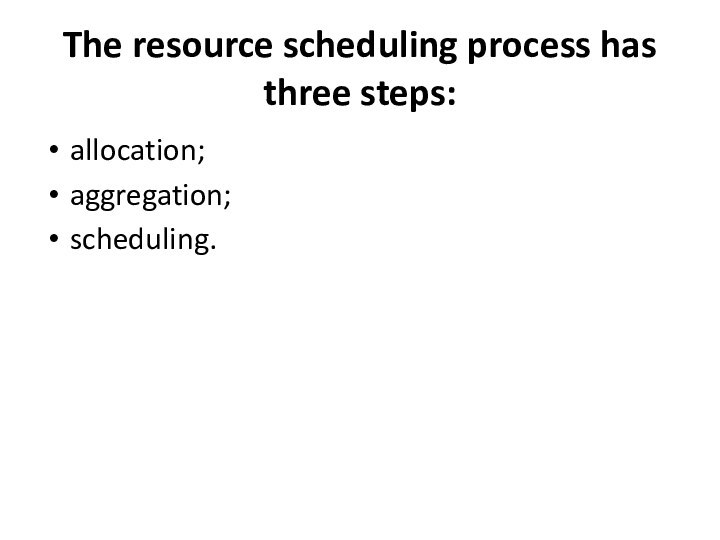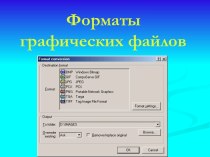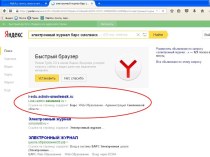- Главная
- Разное
- Бизнес и предпринимательство
- Образование
- Развлечения
- Государство
- Спорт
- Графика
- Культурология
- Еда и кулинария
- Лингвистика
- Религиоведение
- Черчение
- Физкультура
- ИЗО
- Психология
- Социология
- Английский язык
- Астрономия
- Алгебра
- Биология
- География
- Геометрия
- Детские презентации
- Информатика
- История
- Литература
- Маркетинг
- Математика
- Медицина
- Менеджмент
- Музыка
- МХК
- Немецкий язык
- ОБЖ
- Обществознание
- Окружающий мир
- Педагогика
- Русский язык
- Технология
- Физика
- Философия
- Химия
- Шаблоны, картинки для презентаций
- Экология
- Экономика
- Юриспруденция
Что такое findslide.org?
FindSlide.org - это сайт презентаций, докладов, шаблонов в формате PowerPoint.
Обратная связь
Email: Нажмите что бы посмотреть
Презентация на тему Different types of operating system
Содержание
- 2. There are several different operating system classifications
- 3. InteractiveIn an interactive operating system, the user
- 4. Real timeA real time operating system will
- 5. Example If a real time operating system was
- 6. NetworkA layer of software is added to
- 7. EmbeddedEmbedded computer system - A dedicated computer system
- 8. DesktopDesktop operating system - An operating system that
- 9. ServerServer Operating System is an operating system that
- 10. DeviceNot all computers have operating systems. If
- 11. Mobile devicesMobile devices present their own limitations
- 12. SmartphonesSmartphones are able to run a complete
- 13. Benefits of having an operating systemthe device
- 14. What is the main purpose of an
- 15. Resource scheduling and allocationuse techniques for job scheduling and resource allocation
- 16. What do we call process in a computer system?-Why do we need to manage our resources?-
- 17. DefinitionResource scheduling is a collection of techniques
- 18. GeneralThere are two broad categories of resource
- 19. The resource scheduling process has three steps:allocation;aggregation;scheduling.
- 20. Allocation involves identifying what resources are needed
- 21. Few re-usable resources are limitless, so the
- 22. A smoothed resource profile will be achieved
- 23. In many situations a mixture of levelling
- 24. The fully-resourced schedule has to be achievable
- 25. ProjectThe network analysis models used in time
- 26. It should also be born in mind
- 27. ProgramThe projects and change management activity within
- 28. The program and its use of resources
- 29. Скачать презентацию
- 30. Похожие презентации
There are several different operating system classifications you need to know. You need to be able to compare and contrast them, as well as to identify the correct system required for a given problem or situation.





























Слайд 3
Interactive
In an interactive operating system, the user interacts
directly with the operating system to supply commands and
data as the application program executes and the user receives the results of processing immediately. The user is in direct two way communication with the computer.Example: ATM.
Слайд 4
Real time
A real time operating system will give
guaranteed feedback within a predefined set period of time,
therefore taking away the unpredictability of the operation being carried out. This allows for the system to be mathematically modelled to allow the time needed for operations to be carried out to be determined, even under the predicted maximum stress levels. It allows deadlines to be set on operations being carried so as to provide a "best of" result within the time period able to be given for an operation.
Слайд 5
Example
If a real time operating system was used
to control a plane's rudders (via a RT application)
it would need to set deadlines on the calculations used to calculate rudder movements. Without these deadlines a calculations results may be returned too late and cause the plane to crash.One very important factor to remember about real time operating systems and applications is that "the right answer late is wrong". After all what is the point in having the correct answer to a planes rudder calculation if it comes too late and the plane has already crashed because the rudder angle was not changed earlier.
Слайд 6
Network
A layer of software is added to the
operating system of a computer connected to the network.
This layer intercepts commands that reference resources elsewhere on the network, e.g. a file server, then redirects the request to the remote resource in a manner completely transparent to the user.
Слайд 7
Embedded
Embedded computer system - A dedicated computer system with
a limited or non-existent user interface and designed to
operate completely or largely autonomously from within other machinery Many pieces of everyday machinery contain computer systems, for example cars, washing machines and telephones. These systems are called embedded systems. An embedded system has a limited or non-existent user interface and is designed to operate completely, or mostly, independently from within other machinery. Embedded systems also have limited memory capacity. Operating systems for embedded systems are designed to work within the constraints of limited memory size and limited processing power.
Слайд 8
Desktop
Desktop operating system - An operating system that allows
a user to carry out a broad range of
general-purpose tasks.All desktop computers have operating systems, the most common of these are Windows, Mac OS, and GNU/Linux. Desktop operating systems have to be able to support a wide range of tasks and manage many types of hardware and software. In order to do this they require large amounts of memory, multiple processors and large amounts of disk storage capacity. They also have the ability to read and write to optical disks and flash memory drives. Desktop operating systems also require real-time components for multimedia applications and are able to support a broad range of network protocols.
Слайд 9
Server
Server Operating System is an operating system that provides
its networked clients some specific services.
Server Operating system doesn't
have GUI because:more expensive.
it takes up processing power.
Client-server System is a system where services are requested by clients and these services are provided by other computers.
Слайд 10
Device
Not all computers have operating systems. If a
computer only needs to perform one task, then this
can be done most efficiently with just one firmware program running all the time. It would be overkill to add an operating system, adding complexity where it isn't needed and increasing production costs.
Слайд 11
Mobile devices
Mobile devices present their own limitations for
the types of operating systems they can run. They
have to be built with a consideration for the limited memory or processing power and also for the mobility of the device. They also need to be able to manage a network connection, predictive text keyboard, smaller display, phone dialler and limited battery capacity. They may include embedded and real-time elements as well.Your standard mobile phone (i.e. not a smartphone) will run apps in what is known as a sandbox. A sandbox provides strictly controlled resources for a guest program to operate in where network access and the ability to read from the file system are usually not allowed.
Слайд 12
Smartphones
Smartphones are able to run a complete operating
system and provide a standardized interface and platform for
app developers. The operating system must be able to support things like email and internet. We tend to take these things for granted on a phone these days, but smartphones today have more processing power than desktop computers 10 years ago.
Слайд 13
Benefits of having an operating system
the device is
able to multi task.
the device has the ability to
operate in real-time when necessary.the hardware can be changed or upgraded without the application code needing to be changed.
it is easier to add new applications.
changes to the functionality of the system can be implemented by upgrading the operating system without the need to change the hardware.
applications can be developed on the device or created on another device and then installed.
the entire OS can be replaced by another e.g. replacing Windows with Linux.
Слайд 14 What is the main purpose of an Operating
system?
What types of operating systems is commonly used in
our school?When using multi-tasking can be helpful?
And how can it be helpful?
Слайд 15
Resource scheduling and allocation
use techniques for job scheduling
and resource allocation
Слайд 17
Definition
Resource scheduling is a collection of techniques used
to calculate the resources required to deliver the work
and when they will be required.
Слайд 18
General
There are two broad categories of resource –
consumable and re-usable. Scheduling these resources ensures:
efficient and effective
utilization;confidence that the schedule is realistic;
early identification of resource capacity bottlenecks and conflicts.
Слайд 20 Allocation involves identifying what resources are needed to
complete the work. In the case of consumable resources
it is simply the quantity required. In the case of re-usable resources it is the total effort required and the number of individual resources.Once time scheduling and resource allocation are complete, the resources can be aggregated on a daily, weekly or monthly basis as appropriate. The aggregated data is usually presented in a histogram that illustrates the fluctuating use of resources against time. In the case of consumable resources a cumulative curve (which usually takes the form of an ‘s-curve’) is also used to show the total amount consumed at any point in time.
Слайд 21 Few re-usable resources are limitless, so the time
schedule has to be adjusted to take into account
the limited availability of resources over time. There are two approaches to reconciling resource limits and time constraints; resource smoothing (or time limited resource scheduling) and resource levelling (or resource limited scheduling).Resource smoothing is used when the time constraint takes priority. The objective is to complete the work by the required date while avoiding peaks and troughs of resource demand.
Слайд 22 A smoothed resource profile will be achieved by
delaying some work. This will remove some flexibility from
the schedule and its ability to deal with unavoidable delays, but the advantage is usually a more efficient and cost-effective use of resources.Resource levelling is used when limits on the availability of resources are paramount. It simply answers the question ‘With the resources available, when will the work be finished?’
Слайд 23 In many situations a mixture of levelling and
smoothing may be required. This is particularly true in
the programme and portfolio dimensions.Other factors that can be considered include cost-efficiency measures, such as ‘just-in-time’ material deliveries; risks affecting resource availability; and the effect of learning curves on performance.
Слайд 24 The fully-resourced schedule has to be achievable and
have the support of the management team. Unless the
team has input into the schedule, this support is likely to be limited at best and withheld at worst.Resource scheduling may well reveal that the original target, calculated through time scheduling, cannot be achieved. This must be explained to senior management so that expectations can be managed. A fully resourced schedule, taking into account all constraints, will support the case for an extension of time or budget. Without it any case will be less substantial and unlikely to be accepted.
Слайд 25
Project
The network analysis models used in time scheduling
can be used to perform equally detailed calculations for
resource levelling and resource smoothing.Software packages perform very sophisticated calculations that can result in schedules being significantly changed. The danger with these calculations is that they make cause and effect difficult to determine. For example, if a resource levelling calculation is done that takes limits on five different resources into account and delays the project by a significant amount, it will be virtually impossible to see which resource had the greatest impact.
Слайд 26 It should also be born in mind that
concepts such as the critical path and float have
little meaning after a resource scheduling calculation has been applied.An alternative to creating networks based on activity dependencies is to use a technique called critical chain. This method considers the availability of resources and the interdependencies between resources. Once a suitable resource is developed, ‘buffers’ of spare time are allowed at the end of each path. Monitoring the rate of usage of the buffer time is key in controlling projects based on critical chain.
Слайд 27
Program
The projects and change management activity within a
program will have varied requirements for resource scheduling. The
program management team must decide how resources will be scheduled in each context.On some projects (or parts of projects) the program manager may impose time constraints that require the resource schedule to be smoothed. On others, resource constraints may be imposed that require the schedule to be levelled.
Слайд 28 The program and its use of resources are
a highly dynamic and complex environment. Successful resource scheduling
will depend upon a close working relationship between the program manager, project managers and business change managers, who all put the needs of the program ahead of individual projects and change management activity.A strong program-support function is vital. Specialist planners (schedulers) will aggregate information from around the programme to show the overall resource profile and assist in evaluating decisions about the allocation of resources and potential bottlenecks.





























